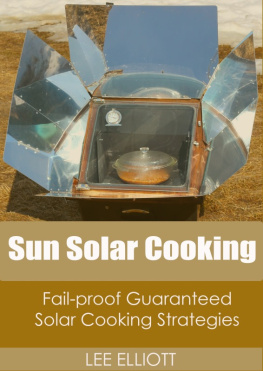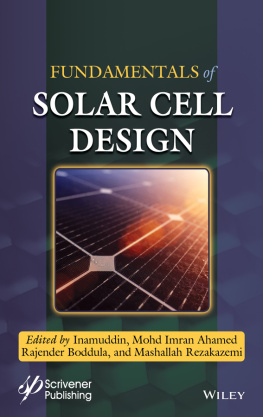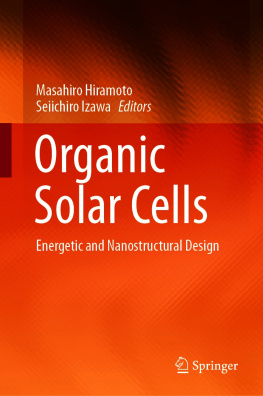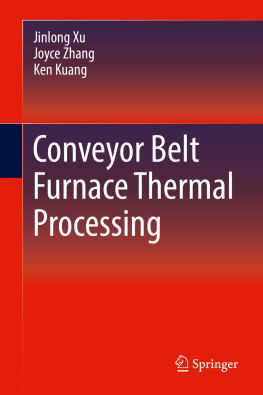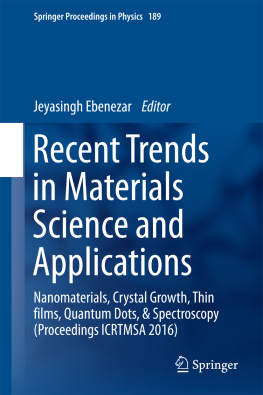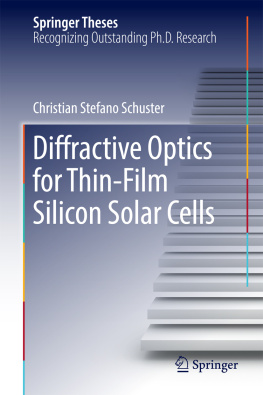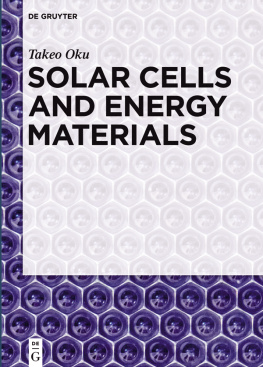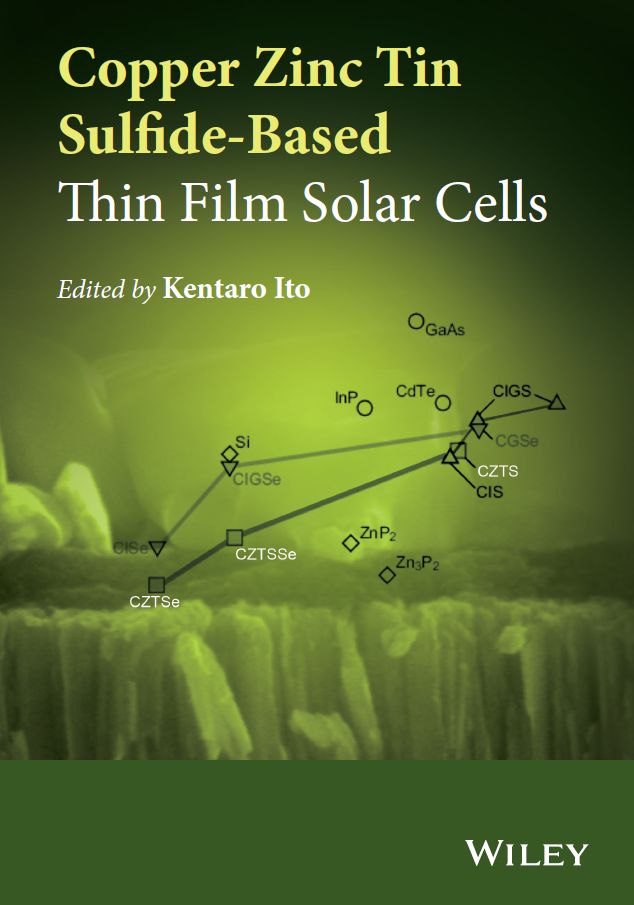
CONTENTS
List of Tables
- Chapter 01
- Chapter 03
- Chapter 04
- Chapter 05
- Chapter 06
- Chapter 07
- Chapter 08
- Chapter 09
- Chapter 11
- Chapter 12
- Chapter 13
- Chapter 15
- Chapter 16
- Chapter 17
List of Illustrations
- Chapter 01
- Chapter 02
- Chapter 03
- Chapter 04
- Chapter 05
- Chapter 06
- Chapter 07
- Chapter 08
- Chapter 09
- Chapter 10
- Chapter 11
- Chapter 12
- Chapter 13
- Chapter 14
- Chapter 15
- Chapter 16
- Chapter 17
Guide
Pages
Copper Zinc Tin Sulfide-Based Thin-Film Solar Cells
Edited by
KENTARO ITO
Shinshu University, Nagano, Japan
This edition first published 2015
2015 John Wiley & Sons, Ltd
Registered Office
John Wiley & Sons Ltd, The Atrium, Southern Gate, Chichester, West Sussex, PO19 8SQ, United Kingdom
For details of our global editorial offices, for customer services and for information about how to apply for permission to reuse the copyright material in this book please see our website at www.wiley.com.
The right of the author to be identified as the author of this work has been asserted in accordance with the Copyright, Designs and Patents Act 1988.
All rights reserved. No part of this publication may be reproduced, stored in a retrieval system, or transmitted, in any form or by any means, electronic, mechanical, photocopying, recording or otherwise, except as permitted by the UK Copyright, Designs and Patents Act 1988, without the prior permission of the publisher.
Wiley also publishes its books in a variety of electronic formats. Some content that appears in print may not be available in electronic books.
Designations used by companies to distinguish their products are often claimed as trademarks. All brand names and product names used in this book are trade names, service marks, trademarks or registered trademarks of their respective owners. The publisher is not associated with any product or vendor mentioned in this book.
Limit of Liability/Disclaimer of Warranty: While the publisher and author have used their best efforts in preparing this book, they make no representations or warranties with respect to the accuracy or completeness of the contents of this book and specifically disclaim any implied warranties of merchantability or fitness for a particular purpose. It is sold on the understanding that the publisher is not engaged in rendering professional services and neither the publisher nor the author shall be liable for damages arising herefrom. If professional advice or other expert assistance is required, the services of a competent professional should be sought
The advice and strategies contained herein may not be suitable for every situation. In view of ongoing research, equipment modifications, changes in governmental regulations, and the constant flow of information relating to the use of experimental reagents, equipment, and devices, the reader is urged to review and evaluate the information provided in the package insert or instructions for each chemical, piece of equipment, reagent, or device for, among other things, any changes in the instructions or indication of usage and for added warnings and precautions. The fact that an organization or Website is referred to in this work as a citation and/or a potential source of further information does not mean that the author or the publisher endorses the information the organization or Website may provide or recommendations it may make. Further, readers should be aware that Internet Websites listed in this work may have changed or disappeared between when this work was written and when it is read. No warranty may be created or extended by any promotional statements for this work. Neither the publisher nor the author shall be liable for any damages arising herefrom.
Library of Congress Cataloging-in-Publication Data
Copper zinc tin sulphide-based thin film solar cells / edited by K. Ito.
pagescm
Includes bibliographical references and index.
ISBN 978-1-118-43787-2 (cloth)
1. Photovoltaic cellsMaterials.2. Solar cellsMaterials.3. Copper-zinc alloys. 4. Thin film devices. I. Ito, K. (Kentaro)
TK8322.C67 2014
621.31244dc23
2014021351
A catalogue record for this book is available from the British Library.
Preface
The most cost-effective route to solar cell fabrication was unlocked by utilizing thin-film technology. The first research papers on this type of cell date back to the 1960s. The semiconductor thin film consisting of a II-VI or I-III-VI2 compound is normally used in the solar cell as an optical absorber with the thickness of microns. It is prepared on a low-cost substrate such as a glass plate, a metal sheet, or a plastic sheet. It was found in the late 1980s that the thin film of quaternary compound Cu2ZnSnS4 also has a suitable energy band and exhibits a photovoltaic effect. In this book we deal with the multinary compound semiconductors which belong to the tetragonal crystal system and have the optimal band gap for photovoltaics: the quaternary sulfide, its alloy, and a selenide. The chemical formulae of the latter are represented as Cu2ZnSn(SxSe1x)4 and Cu2ZnSnSe4. The purpose of this book is to describe current development of thin-film solar cells, from the viewpoint of device performance and absorber processing. We also describe the physical and chemical properties of these compounds, which are considered to play an important role in determining the efficiency of the solar cells.
In the mid-1970s, Professor A. G. Milnes of Carnegie Institute of Technology visited our University in Nagano to speak on the subject of solar cells. At that time he was a visiting scholar at the Tokyo Institute of Technology. He stressed the importance of cost in producing solar cells, and predicted that photovoltaics would not be of any practical use if the cost was higher than the threshold value (equal to ten cents per watt). He made numerous references to this threshold in his talk. He was interested in developing a low-cost GaAs solar cell which is grown epitaxially on a mono-crystalline substrate, a substrate which could be made reusable by detaching it many times from the epitaxial layer using selective chemical etching. Around that time, the efficiency of a GaAs solar cell was 22% while that of a CdTe thin-film solar cell was 8%. Although his concept is indirectly connected to the recent development of a GaAs solar cell, the efficiency of which has approximately reached the theoretical upper limit, it has not been applied to low-cost solar cells because the large-area mono-crystals are not available. By taking account of the rise in electricity rates (Consumer Price Index) during the past four decades, his threshold has to be upgraded to 45 (54) cents per watt at present. It is interesting to note that this converted threshold is only 1.5 times lower than the price of CdTe thin-film solar modules in 2013, as shown in . Despite polycrystalline nature, cost-effective performances of thin-film solar cells are preferable to those of mono-crystalline solar cells.
Multinary compound semiconductors have an absorption coefficient >104cm1 due to the direct nature of the band gap. Films of thickness 1m can absorb almost all the photons in the solar spectrum of wavelength shorter than near-infrared wavelengths, and operate as efficient photocurrent suppliers. The direct band gap is within an optimal range for solar cells, that is, 1.01.5eV. The theoretical upper limit of efficiency for the solar cells is estimated to be 3234%. There is still room for improvement in the present cell performance via a high-quality absorber layer and the optimization of device structure. Since all the chemical elements of the compound are Earth-abundant, the material cost of the absorber can be much lowered in comparison to the II-VI or I-III-VI2 thin-film solar modules in which the absorbers are composed of rare elements such as Te and In.
Next page

